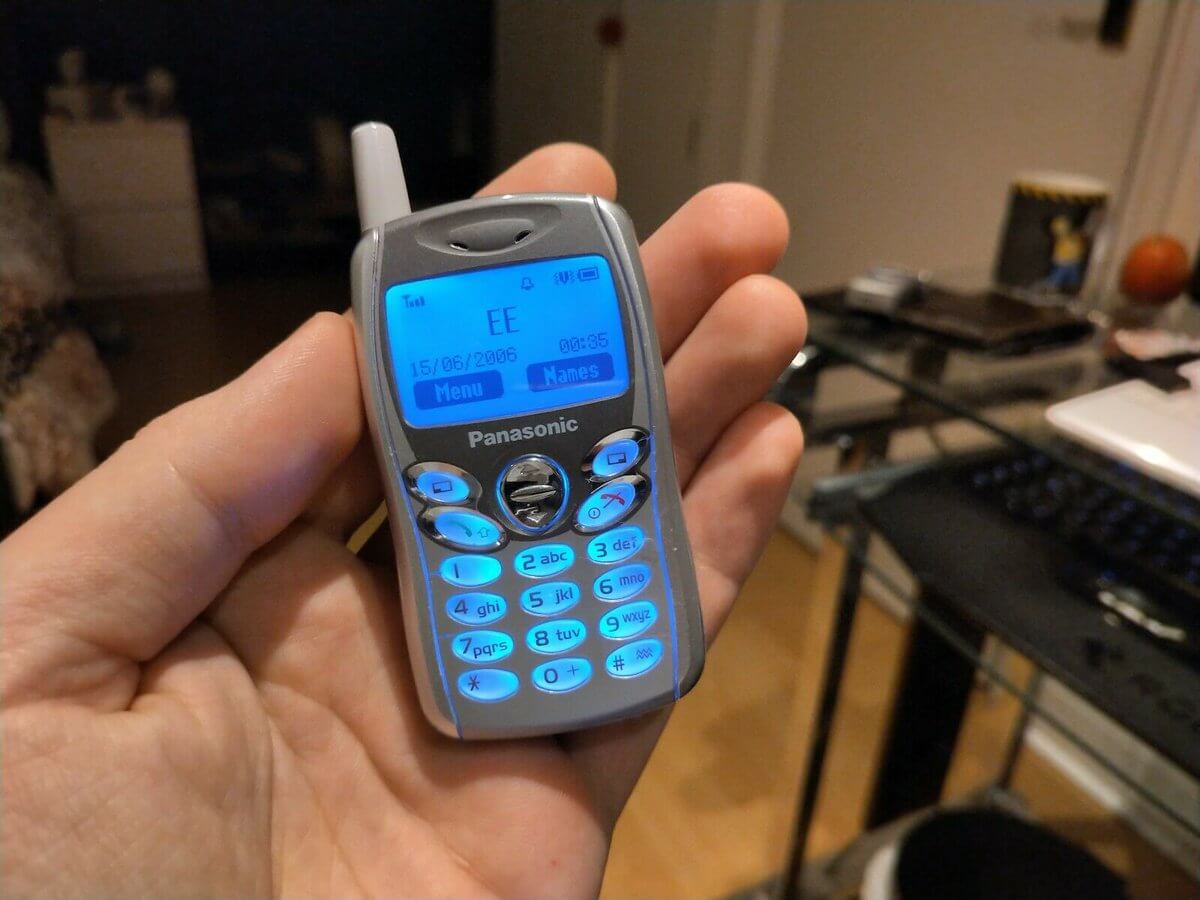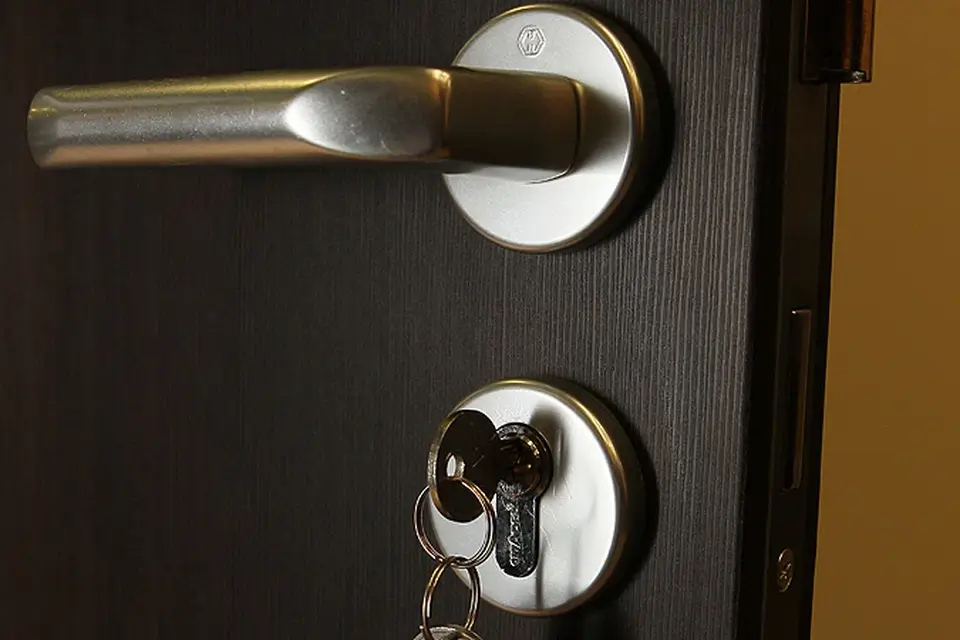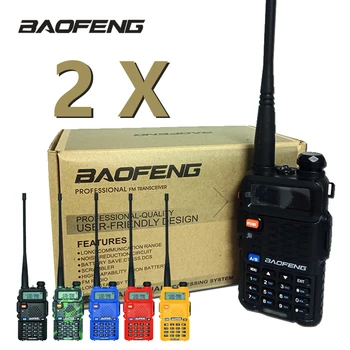Wavecom Digital Data Decoders
![]()
For hundreds of the very latest Klingenfuss screenshots of WAVECOM digital data decoders click here. For more than 8,000 (eight thousand!) screenshots see our brandnew Digital Data Decoder Screenshots on CD!
{googleads right}
Wavecom W-CODE Digital Data Software Decoder
The W-CODE is designed to work with your existing equipment, since no proprietary hardware is required. It allows seamless integration with state-of-the-art SDR (Software Defined Radio) receivers with IQ data or digital audio outputs: MICROTELECOM’s Perseus and the W-CODE are a real dream team! W-CODE provides all functions required to analyze, decode and process radio data communications throughout the spectrum (HF, VHF, UHF, SHF). More than 200 modes are currently implemented, including INMARSAT modes!
TCP/IP data input (LAN) for IQ or PCM coded data
Decoding from PC soundcard with sampling rates up to 192 kHz
Internal sampling rate converter
Direct decoding from audio files
VAC (Virtual Audio Cable) support e.g. for easy connection with state-of-the-art Software-Defined Receivers (SDRs) such as the MICROTELECOM Perseus
Tested with a number of Software Defined Radios (SDR) such as Winradio, Perseus, RF-SPACE SDR14/SDRIQ
Tested with ICOM R9500 (S/PDIF-output, receiver has no IQ/IF output)
Tested with ICOM R2500 (receiver has no IQ/IF output)
Drivers for other SDRs such as IZT, R+S, EADS, AOR etc. on request
More than 200 modes are currently implemented, including INMARSAT
Powerful 48 and 96 kHz wideband FFT
Adaptive equalizer for high-speed PSK protocols
Additional external input device under development (multi-input AF/IF/70 MHz, tunable 0-25 MHz and 52.5-87.5MHz)
XML Remote Control Interface with the same command set as the W61PC hardware products
System requirements: high-quality soundcard, Microsoft Windows XP or Vista, Pentium 4, 1.6 GHz, 512 MB RAM.
{googleads right}
Wavecom W-PCI Digital Data Decoder Card
The W-PCI Digital Data Decoder Card for two channels will be on sale around October 2011. This brandnew product is the successor of the famous series of WAVECOM hardware decoders such as the W61PC, and comprises a half-size PCI board plus the pertinent W-CODE Digital Data Decoder Software. The W-PCI card is ideal for decoding signals coming from a “traditional” receiver using the AF/IF input, since it is superior to a sound card. Typical applications are monitoring HF VHF UHF signals, and INMARSAT monitoring using a 70 MHz down converter. Two versions will be available: W-PCI with a standard 132 Mb/s bus interface …
{googleads right}
Click to enlarge!
… and W-PCIe with a high-speed 250 Mb/s express bus interface.
Click to enlarge!
Wavecom W61PC Digital Data Decoder Card
If you order WAVECOM products from us, we throw in – free of charge! – the latest Klingenfuss Publications at a total value of 230 EUR.
Not shown is the free Digital Data Decoder Screenshots CD that gives you more than 8,000 (eight thousand!) ideas of how to use your WAVECOM decoder.
Click to enlarge!
The W61PC Digital Data Decoder Card is the first choice for setting up complex radio monitoring and spectrum surveillance systems. It uses the same user-friendly Windows-based man-machine interface as the proven W40 and W41 and W51 product series. Based on the AF or IF signal input, the W61PC decodes a variety of data, fax, graphical and text transmission modes. The full support of Windows XP operating systems lets the W61PC easily communicate with other applications. The W61PC is a half-length board 32 bit PCI bus card for use in a Windows XP Pentium 4 PC at 1.6 GHz. The receiver is connected via various AF or IF inputs.
New features:
New digital data codes
Fully tunable 70 MHz IF input for satellite monitoring without external receivers
XML remote control interface
VAC (Virtual Audio Cable) support e.g. for easy connection with state-of-the-art Software-Defined Receivers (SDRs) such as the MICROTELECOM Perseus
I/Q TCP/IP data stream interface
Multi-decoding:
– multiple codes on same signal
– multiple signals inside RX filter and multiple codes with FFT or waterfall
Digital interface for receivers such as Rohde + Schwarz EB200
Digital Signal Processing (DSP):
– high-speed TMS320C6414 chip at 5760 MIPS
– external 128 Mb SD-RAM and 1 Mb Flash-RAM
Digital Down Conversion (DDC):
– 96 dB dynamic range (16 bits)
– Bandwidth configurable 5 – 500 kHz
– automatic gain setting for maximum dynamic range
New powerful 48 and 96 kHz wideband FFT
Fully reconfigurable inputs, FGPA, DSP, bandwidth, and IF frequency
Highly reconfigurable front-end:
– three wideband AF/IF inputs 50 Hz – 25 MHz
– one wideband IF input 52.5 – 87.5 MHz with SAW filter
– automatic level control and overrun protection
– 60 dB input dynamic range
High-performance wideband analog front-end
Optional signal classifier software
Optional bit view tool
Combined Fast Fourier Transformation (FFT) and sonagram analysis of a 10-tone signal. Click to enlarge!
Typical fields of application for the W61PC are:
Manual or automated monitoring of radio data transmissions in the HF UHF VHF SHF satellite bands
Signal intelligence
Signal analysis and classification
In order to meet the particular requirements of the customer, the W61PC can be used in different configurations:
Local use in a PC with standard W61PC application software
Remote use over a LAN with standard W61PC application software
Remote control from other applications using customer-written or third-party software such as radio monitoring tools
The detection of signal parameters is assisted by a large number of analysis and measurement functions that operate over a wide range. The W61PC is the next advanced version of the world-famous line of WAVECOM decoders that only Klingenfuss Radio Monitoring has promoted – and consequently used daily! – from its very creation many many years ago.
Aircraft Communication and Reporting System (ACARS) decoding on HF: H15 Muhurroq Air, Bahrain. Click to enlarge!
{googleads right}
The W61PC is equipped with powerful DSP soft- and hardware to allow the realization of real-time demodulators and filters. The large on-board memory provides sufficient space for data buffering. Additionally, the whole computing power of the host PC is also available for data processing. The application utilizes TCP/IP to communicate with other W61PC cards available on the LAN. A maximum of eight W61PC cards may be installed into one PC, providing the basis for a high-performance signal decoding system. Combined with the network capabilities, this allows a system to be set up for many different configurations. Complex systems for massive data processing are only limited by the number of cards and the performance of the hard- and software.
The configuration of the system components can be completely adapted to the requirements of the customers. A W61PC may be controlled from everywhere in the network and its output may be sent to one or more applications on the network. Any PC can be used for remote control of W61PC cards for decoding, storage, analysis and monitoring.
The W61PC software is a 32-bit Microsoft Windows application providing a familiar user-interface and system functions. The availability of sophisticated software development tools allows rapid implementation of new functionality. In order to process the data output, control the hardware and the code parameters of the W61PC, a remote control interface is available, allowing easy integration between the W61PC and customer applications. The easy-to-use user interface with well structured pull-down menus allows an operator to become familiar with the W61PC in a short time. A high degree of operator proficiency can quickly be achieved.
The integrated analysis tools allow many different measuring methods and viewing options, assisting the operator in analyzing the important signal parameters. Exact measurements are easily made using adjustable cursors with associated numerical displays. Dynamic zoom functions allow magnification of details in any selected window. The scroll buffering feature makes it possible to move back and forward in signal history. Real-time FFT functions with a fast display refresh rate are implemented. Additional powerful functions provide the tools for analyzing unknown signals. A wide range of system default settings can be configured, such as input signal level, sampling rate, measuring interval, centre frequency and demodulator type. Additionally, a variety of international alphabets can be selected. More than 200 systems are currently implemented (see here).
For official government agencies and authorities, we can provide
Additional customer-specific codes
Software source code and the complete development environment: this allows for implementing additional codes or adapting the user interface to specific requirements
Training
The W61 covers a wide range of applications, from stationary monitoring of one transmission with a single system up to fully automated broadband spectrum monitoring. Automatic recognition of CW, PSK, FSK and MFSK systems allows completely autonomous operation. Decoded data can be imported from third-party applications running on the same or another computer in the network. The included Alarm Monitor is an example of such an application. It triggers an audio signal, or a cellphone or pager message, if a predefined string is detected in a decoded text message. With such applications, the data output can also be used to control receivers, recording equipment or be transferred to complex data analysis tools for offline processing. Software-generated time stamps may be automatically added to each line of decoded data to ensure precise backtracking of any signal.
{googleads right}
Alarm monitor: All data decoded/received from text modes is scanned simultaneously for up to ten different user-defined alarm strings, and different alerts are produced accordingly (with optional audio alerts or user-set .wav audio files). Alarm text files can be automatically saved and forwarded e.g. via Short Message Service (SMS) to your cellphone anywhere in the world. Click to enlarge!
Wavecom W61LAN Digital Data Decoder Box
If you order WAVECOM products from us, we throw in – free of charge! – the latest Klingenfuss Publications at a total value of 250 EUR.
Click to enlarge!
High portability and quick setup makes this small metal cabinet the first choice for setting up mobile, outdoor monitoring and surveillance environments in combination with a notebook. It offers all the necessary functions to analyze, decode, record and process radio communication transmissions. Using an AF or IF signal, the W61LAN decodes a variety of text and graphical transmission modes. VAC (Virtual Audio Cable) support is provided as well, e.g. for easy connection with state-of-the-art Software-Defined Receivers (SDRs) such as the MICROTELECOM Perseus. The detection of signal parameters is assisted by a large number of analysis and measurement functions that operate over a wide range. The W61LAN Box includes
W61PC digital data decoder card (see above);
complete single-board computer system;
hard disk, VGA, USB, soundcard and LAN.
Multiple systems can be connected to one laptop or PC. Operation modes are
stand-alone: connect to a mouse, keyboard and monitor;
LAN: connect via LAN to a laptop, workstation or to the Internet;
Windows XP Remote Desktop Service;
remote control: control from other applications using customer-written or third-party software.
If you order WAVECOM products from us, we throw in – free of charge! – the latest Klingenfuss Publications at a total value of 250 EUR.
Click to enlarge!
Technical details
Size 254 mm width x 148 mm depth x 71 mm height
Weight 2½ kg
Operating system Windows XP, 2 GHz processor, 512 MB RAM, 40 GB harddisk, 10/100-base LAN, 1 x RS232, 3 x USB, 3 LPT/1394/microphone/phones/line-out, keyboard, mouse, SVGA monitor
Power supply 12 V DC at 4 A. Optional 10½ – 28 V DC.
Analysis Modes
Autocorrelation
Bit analysis
Bit length
Bit rate
Bit stream FSK raw
Bit stream MFSK raw
Bit stream PSK raw
Code statistic
Fast Fourier Transformation (FFT) baud rate
Fast Fourier Transformation (FFT) real-time oscilloscope
Fast Fourier Transformation (FFT) real-time sonagram
Fast Fourier Transformation (FFT) real-time sonagram and spectrum
Fast Fourier Transformation (FFT) real-time spectrum
Fast Fourier Transformation (FFT) real-time waterfall
Fast Fourier Transformation (FFT) shift
FSK code check
F7B analysis
IAS baud rate
MFSK analysis
MIL/STANAG code check
Mode
PSK bit rate
PSK phase plane
QAM with eye diagram
Raw FSK data
SELCAL analysis
PSK phase plane analysis
Click to enlarge!
Fast Fourier Transformation (FFT)
real-time waterfall analysis
Click to enlarge!
Fast Fourier Transformation (FFT)
real-time sonagram analysis
of a CIS-36 MFSK aggregate signal
Click to enlarge!
{googleads right}
MFSK analysis of a CIS-36 signal
Click to enlarge!
Bit length analysis
Click to enlarge!
Autocorrelation analysis
Click to enlarge!
Demodulators
AM-Fax
BPSK
BR6028
CTCSS
CW (Morse)
DPSK DBPSK DQPSK D8PSK D16PSK
DXPSK from 2DPSK to D16PSK
DTMF
FFSK
FSK
FSK mark-space
F7B 4FSK
GFSK
MFSK
PSK2
PSK4
PSK8
OQPSK
QPSK
Software demodulator for IF input
4FSK
FAX decoding:
KYODO Tokyo, Japan
Service for Japanese fishermen
Click to enlarge!
PACTOR-2 decoding:
Berne Radio, Switzerland
Message traffic list
Click to enlarge!
Systems
ACARS-HF
ACARS-VHF
AIS
ALE (MIL-STD-188-141A)
ALE-400
ALF-RDS
ALIS
ALIS-2
AMSAT-P3-D
ARQ-E
ARQ-E3
ARQ-M2-242
ARQ-M2-342
ARQ-M4-242
ARQ-M4-342
ARQ-N
ARQ6-90
ARQ6-98
ARTRAC
ASCII (IRA) (ITA5)
ATIS Digital Selective Calling
AUM-13
AUTOSPEC
Baudot (ITA2)
BBC-RDS
BIIS
BR6028
BULG-ASCII
CCIR-1 CCIR-2 PCCIR Analog and Digital Selective Calling
CCIR-7 Analog Selective Calling
CCITT Analog Selective Calling
CHU
CIS-11
CIS-12
CIS-14
CIS-36 MFSK
CIS-36-50 MFSK
CIS-50-50 MFSK
Clover 2
Clover 2000
CODAN Digital Selective Calling
CODAN 9001 (not available in all countries)
Coquelet-8
Coquelet-13
Coquelet-80
CTCSS Analog Selective Calling
CV-786
CW (Morse)
DCS Selective Calling
DGPS
DSC HF
DSC UHF/VHF
DTMF Analog Selective Calling
DUP-ARQ
DUP-ARQ-2
DUP-FEC-2
EEA Analog Selective Calling
EFR
EIA Analog Selective Calling
ERMES
EURO Analog Selective Calling
FEC-A
Feldhell
FLEX
FM-Hell
FMS-BOS Digital Selective Calling
GMDSS HF
GMDSS UHF/VHF
Golay
G-TOR
GW-FSK
GW-OFDM
GW-PSK
HC-ARQ
HF-ACARS
HFDL
HNG-FEC
ICAO-SELCAL Annex 10
ICRC-PACTOR
ICRC-PACTOR-2
INMARSAT Aero
INMARSAT A Telex
INMARSAT B C TFC
INMARSAT B forward Data Fax Telex Voice
INMARSAT B HSD
INMARSAT B TEL
INMARSAT B Telex MM
INMARSAT B Telex SM
INMARSAT C EGC (Enhanced Group Calls)
INMARSAT C TDM TDMA
INMARSAT M F forward Data Fax Voice
INMARSAT M Mini-M R return Data Fax Voice
INMARSAT M TEL
INMARSAT M voice-implemented (IMBE CODEC)
INMARSAT Mini-M F forward Data Fax
INMARSAT Mini-M TEL
INMARSAT Mini-M Voice
IRA (ITA5) (ASCII)
ITA2 (Baudot)
ITA5 (IRA) (ASCII)
MD-674
Meteosat-Weatherfax
MFSK-8/16/20
MIL-M55529-A
MIL-STD-188-110A serial tones
MIL-STD-188-110A 16 tones
MIL-STD-188-110A 39 tones
MIL-STD-188-110B (Appendix B)
MIL-STD-188-110B (Appendix C)
MIL-STD-188-110B 16 tones
MIL-STD-188-141A (ALE)
MIL-STD-188-141B
MIL-M-55529 NB/WB
MOBITEX-1200 MOBITEX-8000
MODAT Selective Calling
Morse (CW)
MPT1327
NATEL Analog Selective Calling
NMT-450
NWR-SAME
NOAA/GEOSAT-Weatherfax
OLIVIA
ORBCOMM
Packet Radio HF
Packet Radio UHF/VHF
PACTOR-1 1-8
PACTOR-2 1-8
PACTOR-FEC
PACTOR-2-FEC 1-8
PACTOR-3
Piccolo-6
Piccolo-12
POCSAG (SKYPER)
POL-ARQ
Press-Fax
PSK-AM
PSK-10
PSK-31
PSK-31-FEC
PSK-63F
PSK-125F
PSK-220F
Robust Packet Radio
RUM-FEC
SI-ARQ
SI-Auto
SI-FEC
SITOR-A (ARQ)
SITOR-Auto
SITOR-B (FEC)
SKYPER (POCSAG)
SP-14
SPREAD-11
SPREAD-21
SPREAD-51
SSTV (all modes: Automatic Martin Robot SC Scottie Wraase)
STANAG 4285 with automatic frame format recognition
STANAG 4415
STANAG 4481 FSK
STANAG 4481 PSK
STANAG 4529 with automatic frame format recognition
STANAG 4539
STANAG 5065-FSK
STANAG 5066 with parser
SWED-ARQ
TWINPLEX SITOR-ARQ
UNO-PACTOR
UNO-PACTOR-2
VDEW Analog Selective Calling
VDL-M2 (VHF-ACARS Mode 2)
VHF-ACARS
VISEL PSK-31 FEC
Weatherfax
ZVEI 1/2/3/digital DZVEI PDZVEI PZVEI Analog and Digital Selective Calling
Aircraft Communication and
Reporting System (ACARS)
decoding on VHF:
Zürich Air, Switzerland,
to flight AF2347
Click to enlarge!
Automatic Link Establishment
(ALE) decoding:
JDG United States Navy,
Diego Garcia, Indian Ocean
Click to enlarge!
ITA2 decoding and code statistic:
El Djaza’ir Radio, Algeria
Click to enlarge!
STANAG-4285 decoding:
French Navy Saissac, France
Click to enlarge!
{googleads right}
MIL/STANAG code check
Click to enlarge!
Global Wireless (GW)
Orthogonal Frequency-Division Multiplexing (OFDM)
Frequency-Shift Keying (FSK) decoding:
Ship station transmitting
NMEA-0183 coded (watch the pirates!)
automatic GPS position and track data
to Rogaland Radio, Norway
Click to enlarge!
PACTOR-3 decoding:
Sailmail Radio, Brugge, Belgium
Click to enlarge!
DGPS (Differential Global Positioning System) decoding:
Beacon Iffezheim, Germany
and the superb GARMIN GPSmap 60CSx
Click to enlarge!
Separate options are now included!
Certain software options and versions, such as CODAN and INMARSAT and PACTOR-3, are now included with all WAVECOM products and need no longer to be acquired and licensed separately!
Alphabets
Arabic ITA2 5-bit
ARQ1a 7-bit (used in ARQ-E, ARQ-N, FEC-A)
ATU-80 Arabic ITA2 5-bit
Bauer 10-bit (used in AUTOSPEC, SPREAD)
BCD (used in ACARS, ATIS, ERMES, FMS-BOS, VDEW-SELCAL, ZVEI-SELCALL)
binary (used in MPT1327/1343)
Bulgarian IRA (ITA5) (ASCII) 7-bit
Cyrillic and third-shift Cyrillic M2 (used in CIS-14, CIS-36 MFSK)
Cyrillic and third-shift Cyrillic M2 with 2 identification bits and 4 parity bits (used in CIS-11)
Cyrillic Morse
Hebrew Morse
IRA (ITA5) (ASCII) 7-bit (used in BR6028, GOLAY, Packet Radio, Piccolo-12, POCSAG)
IRA (ITA5) (ASCII) 7-bit with block coding (used in DUP-ARQ-2, DUP-FEC-2, G-TOR, PACTOR, Packet Radio)
ITA1 5-bit Latin
ITA2 5-bit (used in BR6028, Baudot, Piccolo-6)
ITA2 5-bit with block coding (used in ALIS, DUP-ARQ, HC-ARQ)
ITA2 5 bit Cyrillic Danish/Norwegian Hebrew Latin Swedish Transparent
ITA2 with 10 redundancy bits (used in HNG-FEC)
ITA3 7-bit (used in ARQ-E3, ARQ-M2, SI-ARQ, SI-FEC)
ITA5 7-bit Bulgarian Chinese Danish/Norwegian French German Swedish USA
SITOR 7-bit (used in ARQ6, POL-ARQ, SITOR, SWED-ARQ, TWINPLEX SITOR)
Standard Morse
Third-shift Greek ITA2 5-bit
Transparent
Unicode
User-defined alphabets
8-bit binary alphabet (used in CALSEL)
16-bit alphabet (used in RUM-FEC)
16-bit modulo 10 alphabet (used in RUM-FEC)
80S (used in Coquelet-82)
82S (used in Coquelet-82)
401 (used in Coquelet-13)
402 (used in Coquelet-13)
403 (used in Coquelet-8)
SITOR decoding: Egyptian Embassy Rome, Italy, to Ministry of Foreign Affairs Cairo, Egypt, using the ATU-Arabic teleprinter alphabet and the superb translation procedure explained in our Radio Data Code Manual. Click to enlarge!
Signal Classifier Software
This option is a software module that is fully integrated in the existing hard- and software. The ability to rapidly identify unknown signals has increasingly become an essential requirement in signal analysis. The automation of the signal classification process relieves the operator from manual evaluation, which otherwise requires consierable skills and long-time experience in professional radio monitoring. The combination of a classifier and a decoder thus satisfies the requirement for an automatic system that is able to rapidly and reliably determine the characteristics of radio data transmissions within the signal spectrum being monitored. The results of the classification are shown as a list in a second panel. Full XML control of all classifier settings is now provided as well. The following parameters are provided for each classified signal:
Modulation type
Center frequency
Number of carriers, in the case of multi-carrier FSK
FSK or PSK baud rate
FSK frequency shift
Bandwidth
Confidence level, as a percentage
A FSK/PSK or MFSK code check of the classified signal may be initiated to further determine the signal. After the code check has been completed, the identified code may be started.
Classification of a PSK8A signal
{googleads right}
Click to enlarge!
Classification of a F1B signal
Click to enlarge!
Classification of a OFDM 45-tones signal
Click to enlarge!
Satellite monitoring software
The W61PC features a fully tunable 70 MHz IF input for satellite monitoring without external receivers. The pertinent software decodes INMARSAT. To monitor INMARSAT traffic, you need additionally
L- or C-band antenna;
LNA or LNB;
standard down-converter to 70 MHz.
INMARSAT-A is the original INMARSAT system, which has been operating since 1982, based on analogue techniques and capable of global two-way telephony, facsimile, data and telex communications. The W61SAT monitors the forward TDM channel. The forward telex traffic channel contains 22 timeslots of 50 Baud telex channels.
INMARSAT-B is a system based on digital technology, and capable of high quality telephony, facsimile, data and telex services. INMARSAT-M has been introduced in 1993. It is based on digital technology and capable of two-way voice telephony, distress alerting, fax and data services at lower data rates. INMARSAT-Mini-M has been introduced in 1995, it is based on digital technology and capable of two-way voice telephony, alerting, fax and data services. The system operates only in the reduced coverage offered by the spot beams. The W61SAT monitors the control channel, and upon initiation of a new session with a mobile terminal, automatically switches to the assigned traffic channel for monitoring. To limit the volume of monitored traffic, a watch list may be created containing target Mobile Earth Station (MES) IDs. Monitored fax, voice and data sessions are stored in files. A fax viewer is included in the software.
INMARSAT-C is a digital system based on a low-cost MESs with low power consumption. It provides global two-way store-and-forward messaging, distress alerting, EGC SafetyNETTM and FleetNETTM, data reporting and polling. This is a store-and-forward low-speed message transmission system. Currently it is one of the most reliable and most used systems for today’s communication. The W61SAT monitors TDM traffic going to the MES with data output in ASCII, HEX or Baudot, and TDMA traffic on the return channel traffic to the Land Earth Station (LES).
INMARSAT-M spectrum
Click to enlarge!
INMARSAT-Mini-M spectrum
Click to enlarge!
INMARSAT Fax reception
Click to enlarge!
Bit View Tool
This option is a offline tool with .NET technology for the analysis of any bit stream e.g. from complex PSK transmissions. You can use e.g. the data stream output from the W-CODE or W-PCI or W61PC.
The tool is directed at users with experience in statistical and mathematical functions and coding theory. It covers analysis tools, auto calculation, binary modulation, bit manipulation, channel decoding, data unzip, source decoding, CRC and polynomial systems, hexadecimal view, MATLAB custom libraries, and so on. You can e.g. apply, modify and display various alphabets. All steps of the analysis are automatically logged and saved to log files in XML format. The log file may be re-loaded and used by the software to repeat the saved analysis steps. This allows analysis sessions to be documented and stored for later automatic rerun without user intervention. This feature enables the user, to a certain degree, to execute a pre-production decoding in cases where a decoder for a particular new digital data transmission system is not yet available.
Algorithm
Click to enlarge!
Text extraction
Click to enlarge!
De-Stuffing
Click to enlarge!
Graphic bit display
Click to enlarge!
Synchronization analysis
Click to enlarge!
Raw bits decoding
Click to enlarge!
Order
Please tell us what you need and provide your full postal address plus e-mail and fax. We will airmail and e-mail and fax to you a detailed quotation plus detailed brochures on the WAVECOM W-CODE and W-PCI and W61 product series. For latest prices click here. There is a waiting list and the usual first-in first-out procedure. We ship worldwide by fully insured UPS express airfreight at original WAVECOM prices without additional costs or profit – for a list of professional customers all over the world click here. If your customs office has a problem with “Data decoder” or “Signal analyzer”, we can name the decoder a “Digital data interface PC card” or something similar if you ask us to do so, and UPS will settle the customs clearing procedure for you – that’s their job and they really know it! If you order WAVECOM products from us, we throw in – free of charge! – the latest Klingenfuss Publications at a total value of 250 EUR:
1997-2011 Digital Data Decoder Screenshots CD, value 90 EUR
2011/2012 Guide to Utility Radio Stations, value 50 EUR
Radio Data Code Manual, value 50 EUR
2011 Super Frequency List on CD, value 30 EUR
Radiotelex Messages, value 30 EUR
Low Tax
This is a business and we’re talking about money – your money. If you’re located in a member country of the European Union, take good care: they will rip you off. For goods imported from outside the EU, you have to pay
The cost of the product
Transport and insurance costs
Customs duty on (A + B)
VAT on (A + B + C)
Example:
10’000 EUR
350 EUR
Customs duty on 10’350 EUR, e.g. 12 % = 1’242 EUR
VAT on 11’592 EUR, e.g. 22 % = 2’550 EUR
gives you a total of 14’142 EUR, i.e. 41 percent more than the original cost!
Because of no duties and low taxes, it is particularly advisable to import goods from countries outside of the EU – such as Switzerland – via Germoney:
Germany is, by far and away, Switzerland’s main trading partner: import 34 % from Germany and 12 % from Italy, forget the rest; export 21 % to Germany, 10 % to USA and 9 % to Italy, the rest is neglectable. Needless to say, we do speak the same language (and dialect, here in the wild wild south!), and Tuebingen, the administrative location of Klingenfuss Radio Monitoring, is a mere 117 kilometres from Buelach, the company headquarters of WAVECOM. It goes without saying that, for decades, we have been on first-name terms with each other. Only Germany – and no other country within the EU! – has exclusive bilateral non-taxation agreements for the facilitation of Swiss-German-Swiss cross-border business. For you, our customer, this means precisely that we – read: you! – do not pay any customs duty on WAVECOM products imported via Germany!
For EU customers, the only tax applicable on WAVECOM products imported via Germany is the German VAT – explicitly: not the much higher VAT at the rate of your country! Believe it or not, but Germany has the lowest VAT rate within the EU: it’s a mere 19 %. Apart from the considerable customs duty – see above! – , you would have to pay much more for Swiss goods imported to other EU member countries, or via a dealer in other member countries:
– Austria 20 %
– Belgium 21 %
– Denmark 25 %
– Finland 22 %
– France 21 %
– Hungary 25 %
– Ireland 21 %
– Italy 20 %
– Poland 23 %
– Portugal 23 %
– Slovenia 21 %
– Sweden 25 %
By consequence, the calculation for goods imported via Germany goes like this:
10’000 EUR
350 EUR
Customs duty on 10’350 EUR, i.e. 0 % = 0 EUR
VAT on 10’350 EUR, i.e. 19 % = 1’966 EUR
gives you a total of 12’316 EUR. You save 1’826 EUR!
For dozens of very recent original screenshots click here. For hundreds of sample screenshots see our guidebook Radiotelex Messages, the brandnew 2011/2012 Guide to Utility Radio Stations, the new 2011 Super Frequency List on CD, and the new Radio Data Code Manual. For thousands of sample screenshots see our brandnew Digital Data Decoder Screenshots on CD!
Klingenfuss Radio Monitoring:
the difference between jumping on the bandwagon – and driving it!













